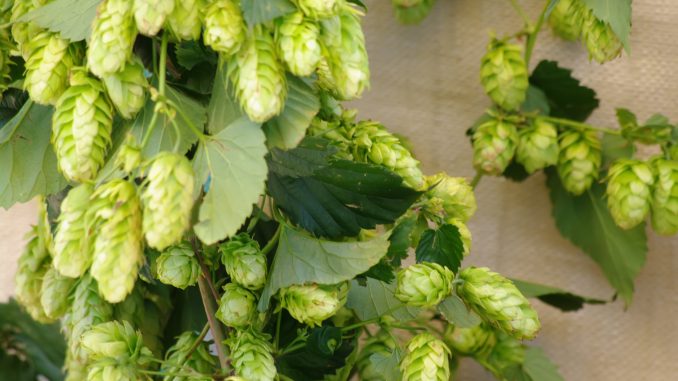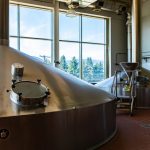
Dry hopping is a brewing technique that adds a burst of hop aroma and flavor to beer without contributing significantly to its bitterness. This process occurs late in the beer-making journey, after the wort has been boiled and cooled, and yeast fermentation is underway or completed. By introducing hops at this stage, brewers can enhance the aromatic profile of the beer, creating a sensory experience that is vital in styles like India Pale Ales (IPAs), Pale Ales, and certain lagers. Hopping of beers has long been an important and integral element of making a beer. In this short article, we will delve into the intricacies of dry hopping, from its purpose to the methods employed.
Understanding the Purpose of Dry Hopping
Dry hopping serves two primary purposes: aroma enhancement and flavor augmentation. Hops added during the boil contribute bitterness to the beer, but the volatile aromatic compounds responsible for hop aroma are often lost during this process. Dry hopping, however, allows these delicate compounds to be preserved and impart their unique characteristics directly to the beer.
Hop Selection and Timing
Before delving into the process, brewers must select the right hop varieties for dry hopping. A wide array of hop varieties with distinct aromas, ranging from citrus and floral to piney and earthy, are available. The choice depends on the desired flavor profile of the beer.
The timing of dry hopping is crucial. It typically occurs during or after the primary fermentation phase. If added too early, the volatile aromas might be lost due to the vigorous fermentation process. However, waiting until fermentation is complete allows the hops to express their full aromatic potential.
Methods of Dry Hopping
Several methods are employed for dry hopping, each influencing the beer differently. The common techniques I know of are these:
- Loose Dry Hopping: This method involves adding loose hops directly to the fermenter. Brewers may use whole cone hops or pelletized hops. Pellets, being more compact, are popular due to their ease of handling. The hops can be added to the primary fermentation vessel or transferred to a secondary vessel.
- Bagged Dry Hopping: To simplify the removal of hop material, brewers sometimes place the hops in a mesh bag before adding them to the fermenter. This makes it easier to separate the hops from the beer later. However, the surface area of the hops in contact with the beer is slightly reduced compared to the loose method.
- Closed System Dry Hopping: Some breweries employ closed systems to minimize oxygen exposure during dry hopping. This involves using specialized vessels or equipment that allow the addition of hops without exposing the beer to the external environment.
Dry Hopping Duration
The duration of dry hopping varies based on the brewer’s intent and the desired intensity of hop character. It can range from a few days to several weeks. Shorter durations may yield a more subtle hop influence, while longer durations intensify the aroma and flavor. Brewers often taste the beer regularly during the dry hopping process to determine the optimal time for hop removal.
Temperature Considerations
Temperature plays a crucial role in extracting hop compounds during dry hopping. While warmer temperatures generally facilitate greater extraction, there is a risk of extracting undesirable compounds that can lead to off-flavors. On the other hand, cooler temperatures may result in a more controlled extraction. Brewers often experiment with different temperatures to find the sweet spot for each beer style.
Post-Dry Hopping Processing
Once the desired hopping duration is reached, the next step is to separate the beer from the hop material. If loose hops were used, this can be achieved by carefully siphoning the beer to another vessel, leaving the hop material behind. Bagged hops can be easily removed from the vessel.
Filtering or centrifugation may be employed for larger-scale brewing operations to remove hop particles more efficiently. Care is taken to avoid excessive aeration during this process to preserve the beer’s quality.
The Impact on Beer Styles
Dry hopping has become synonymous with certain beer styles, particularly the hop-forward ones. IPAs, in their various forms like American IPA, New England IPA, and Double IPA, owe much of their distinctive character to this technique. However, brewers are continually pushing boundaries, experimenting with dry hopping in styles traditionally less associated with intense hop aromas.
Evolution of Dry Hopping
The approach to dry hopping has evolved with innovations in brewing technology and the quest for more efficient methods. Some breweries have adopted techniques like biotransformation dry hopping, where hops are introduced during active fermentation, leading to the transformation of hop compounds by yeast.
Additionally, the use of hop products like lupulin powder, which contains concentrated hop compounds, has gained popularity for its efficiency in imparting intense hop flavors with minimal vegetative material.
Dry hopping is a versatile and creative aspect of modern brewing that allows brewers to showcase the unique flavors and aromas of different hop varieties. It is a delicate process that demands careful consideration of factors such as hop selection, timing, temperature, and extraction methods. As craft brewers continue to experiment and innovate, the art of dry hopping will likely play a central role in shaping the diverse and ever-evolving world of craft beer.


Leave a Reply